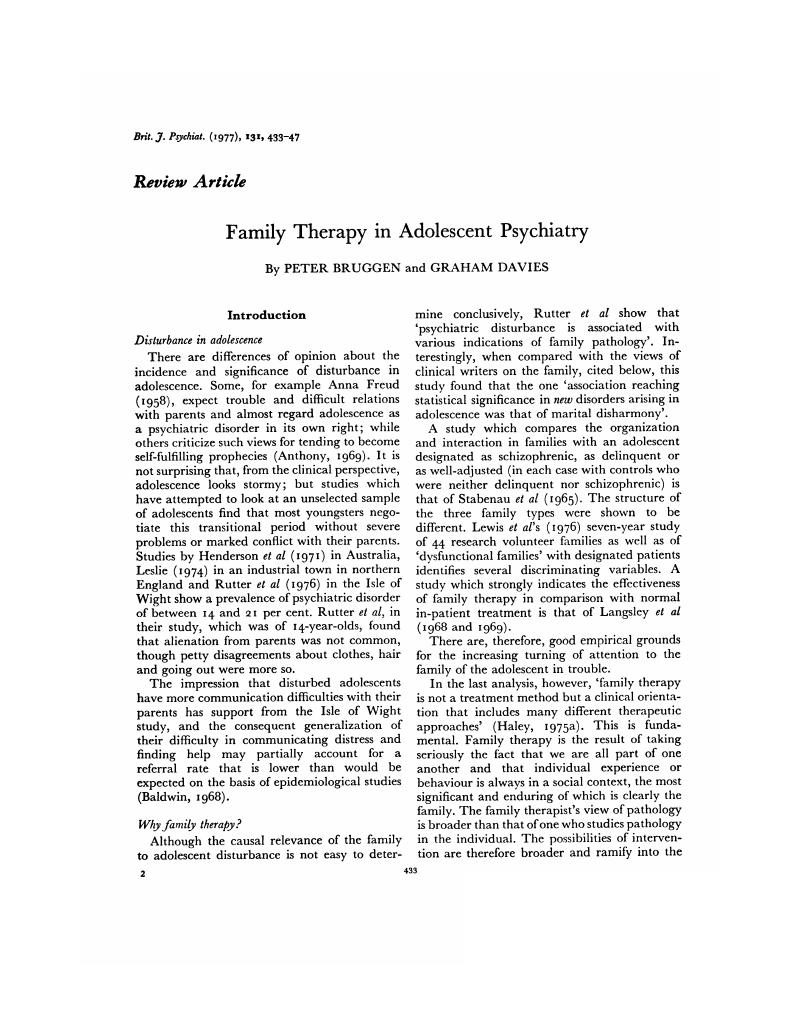Crossref Citations
This article has been cited by the following publications. This list is generated based on data provided by Crossref.
Lubin, Bernard
Reddy, W. Brendan
Taylor, Audrey
and
Lubin, Alice W.
1978.
The Group Psychotherapy Literature: 1977.
International Journal of Group Psychotherapy,
Vol. 28,
Issue. 4,
p.
509.
Cooklin, Alan I.
1979.
The adolescent as problem, patient or therapist?.
Journal of Adolescence,
Vol. 2,
Issue. 2,
p.
113.
Steinberg, Derek
1982.
Treatment, Training, Care or Control?.
British Journal of Psychiatry,
Vol. 141,
Issue. 3,
p.
306.
MESTER, ROBERTO
HAZAN, YORAM
SELLA, AVNER
and
KLEIN, HILLEL
1983.
Therapeutic Approaches to Families of Young Israeli Soldiers.
Family Process,
Vol. 22,
Issue. 1,
p.
61.
Cross, Darryl G.
1985.
The Age of Accountability:* The Next Phase for Family Therapy.
Australian and New Zealand Journal of Family Therapy,
Vol. 6,
Issue. 3,
p.
129.




eLetters
No eLetters have been published for this article.